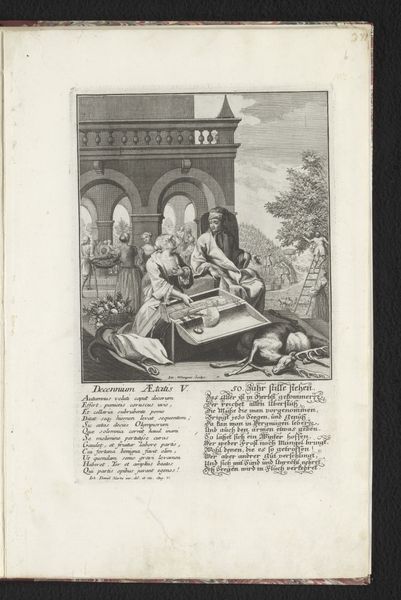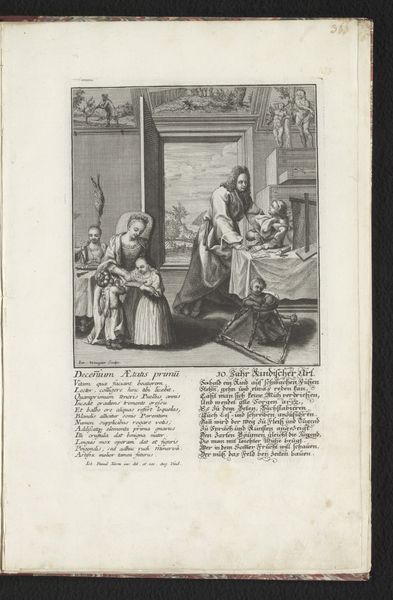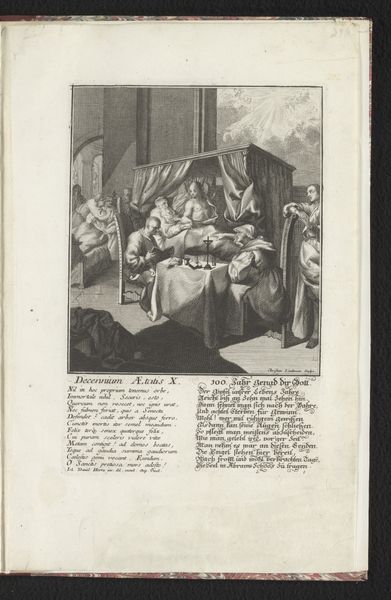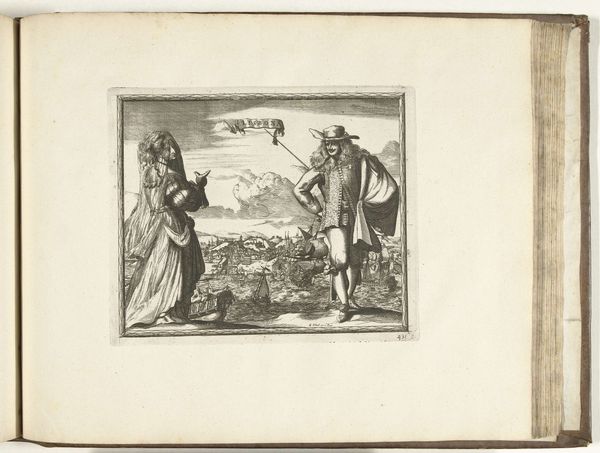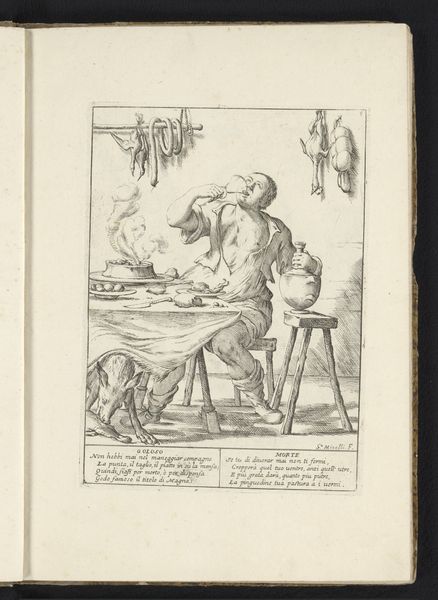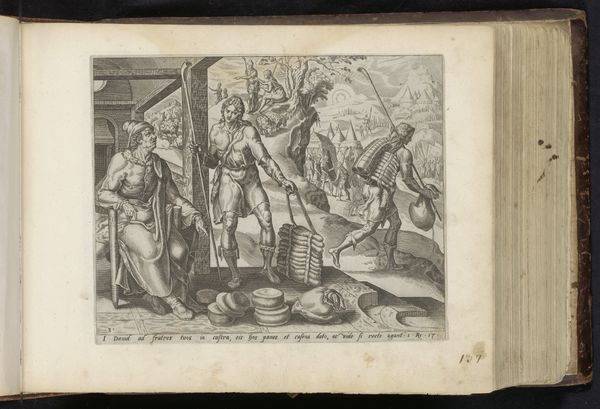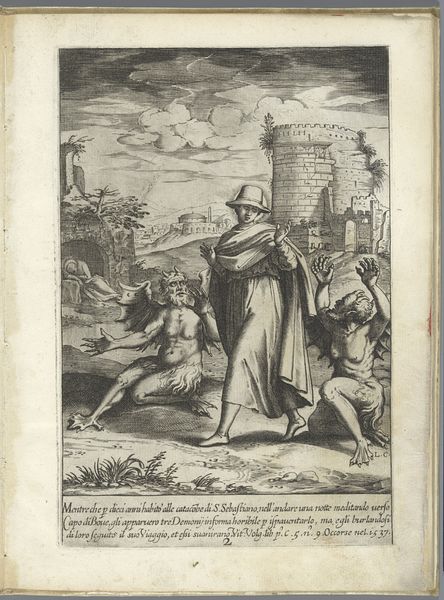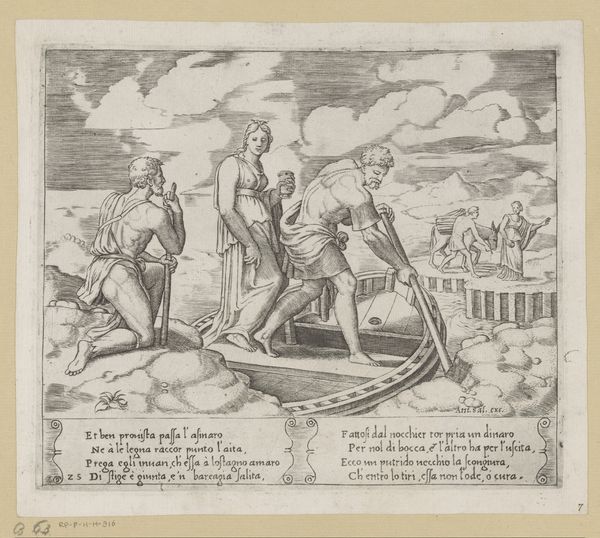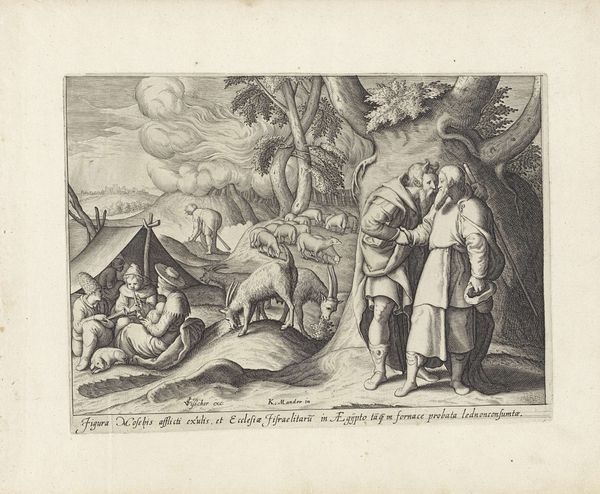
print, paper, engraving
#
portrait
#
baroque
# print
#
paper
#
genre-painting
#
engraving
Dimensions: height 240 mm, width 160 mm
Copyright: Rijks Museum: Open Domain
Editor: This is "De mens op veertigjarige leeftijd," or "Man at Forty," a print by Christian Philipp Lindemann from around 1725-1730. It’s interesting; I see two men, one with a slightly burdened stance. What's your interpretation? Curator: Well, given the historical context, consider this as a genre painting reflecting Baroque sensibilities, yet also speaks volumes about identity and commerce in the 18th century. Notice how the artist situates one figure, presumably the 'man at forty,' amidst ships and cargo. He's literally weighed down. What commentary might Lindemann be making about the burdens of adulthood, perhaps particularly concerning mercantile pursuits? Editor: That's fascinating! The ships immediately struck me as a background element, but viewing them as part of this man's burden shifts everything. But what about the other figure inside? Curator: Indeed. The presence of another figure, seemingly documenting or profiting from the merchant's efforts, prompts questions of class and power. How does this image negotiate ideas about labor, wealth, and societal expectations placed upon men, particularly those engaged in trade? It is a stark observation if we place this art in dialogue with Feminist Theory that the role of commerce puts undue pressures upon Masculinity and manhood in general. Editor: So, beyond just a portrait, it’s also about the pressures and power dynamics of the time, represented visually. Is Lindemann making a judgment here, or just showing things as they were? Curator: It’s difficult to say definitively, but the composition invites critical analysis. Look at his downcast glance as it relates to gender studies and socioeconomic context. Through engagement of feminist and cultural viewpoints, art serves as both an artifact of its period and prompt a social commentary that encourages us to think. Editor: I never would have seen all that just by looking at it! Curator: That’s the joy of art history. It’s never just *what* you see, but *how* and *why* you see it within layers of culture.
Comments
No comments
Be the first to comment and join the conversation on the ultimate creative platform.
